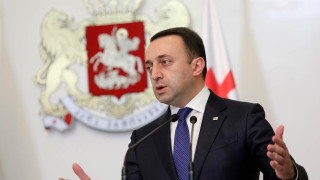Irakli Gharibashvili: “The country’s economy increased by USD 10 billion in the last two years and the GDP per capita is already at USD 8,000.”
Resume: In light of the 6.8% economic contraction and the record depreciation of GEL in 2020, Georgia’s nominal GDP decreased from USD 17.5 billion to USD 15.8 billion. As a result of a 10.5% economic growth in 2021 as well as a 9.6% inflation rate and GEL gaining ground, the GDP increased to GEL 18.6 billion. According to the estimates of the Ministry of Finance, the 10.1% economic growth in 2022, coupled with an 11.9% inflation and GEL appreciation, the nominal GDP reached USD 24.8 billion. It is forecasted that the GDP per capita will reach USD 7,916 in 2023.
The Prime Minister’s figures and the official statistics are largely in line with each other, although the approach is wrong. For example, taking a pandemic year as a base period and not taking inflation and exchange rate changes into account vis-à-vis nominal growth substantially alters the picture and shows progress more exaggerated than it actually is. If the forecasted economic growth figure (5%) holds true, Georgia will have an 86% growth of nominal incomes in 2023 as compared to 2020 whilst the real economic growth is much lower at 28%. Therefore, FactCheck concludes that Irakli Gharibashvili’s statement is a Half True.
Analysis:
On 12 March 2023, Prime Minister Irakli Gharibashvili, on air on TV Imedi’s Imedis Kvira programme, stated (from 44:58): “There were 220,000 new jobs created in the last two years, the GDP – the total economy increased by USD 10 billion and the GDP per capita is already at USD 8,000.”
Irakli Gharibashvili took 2020 as a base year and compared it to 2022 and forecasted figures for 2023. FactCheck already wrote an article in February 2023 about the Prime Minister’s statement about jobs and gave it a verdict of a manipulation. In regard to the total GDP and the GDP per capita, there are three important elements of the context hiding behind nominally precise figures: the economic downturn amid the pandemic, exchange rate changes and inflation.
As a result of the 2020 pandemic and stringent COVID-regulations, Georgia’s economy contracted by 6.8% which was a record drop since 1994. The result of such an economic decline was a temporary ban on the activities of business entities. The re-opening of closed enterprises cannot be considered as the government’s success. In 2021, most countries had record high economic growth similar to Georgia. For the first time since 1973, the world economy increased by 5.9%.
Graph 1: Georgia’s Nominal Economy (USD Billion) and Economic Growth Rate

Source: World Bank, Ministry of Finance
Another factor which gives the difference between the real and the nominal GDP is inflation. In 2022, the average annual inflation rate was 11.9% which is the highest since 1999. The growth rate of consumer prices was also very high in 2021 at 9.6%. According to the assessment of the Ministry of Finance, the nominal GDP increased by 32.9% from USD 18.6 billion to USD 24.8 billion under the 10.1% economic growth in 2022.
Similar to the nominal GDP, the GDP per capita in USD also allows a room for manipulation. The forecasted figure for 2023 is indeed USD 7,916 which is very close to “USD 8,000” as claimed by the Prime Minister but in this case, too, exchange rate changes and inflation should definitely be taken into consideration.
Although from 1 January 2021 to 31 December 2022 GEL appreciated vis-à-vis USD by 18% and the USD to the GEL exchange rate dropped from 3.28 to 2.7, this did not lead to a reduction of prices which increased by 23.8% in the same period.
Hypothetically, if the cost of the production of X product at the beginning of 2021 was GEL 100 which equalled USD 30.5 by the end of 2022, the cost increased to GEL 123.8 without the growth of production output and quality improvement which in foreign currency amounted to USD 45.9. The difference – which is USD 15.4 – is a result of inflation and a change in the exchange rate and not of real economic growth.
Given all these factors, if the 2023 economic growth rate is 5% as planned, the nominal income by the end of 2023 will be 86% higher as compared to 2020 whilst the real income growth will be three times less at a mere 28%.
Graph 2: Nominal Income Per Capita (USD) in Georgia
Source: World Bank, Ministry of Finance
Taking into account the base period, changes in currency exchange rate and inflation, the Prime Minister’s figures are technically accurate but this does not show the real picture. Artificially disregarding these factors is an attempt to exaggerate achievements and constitutes a Half True.








